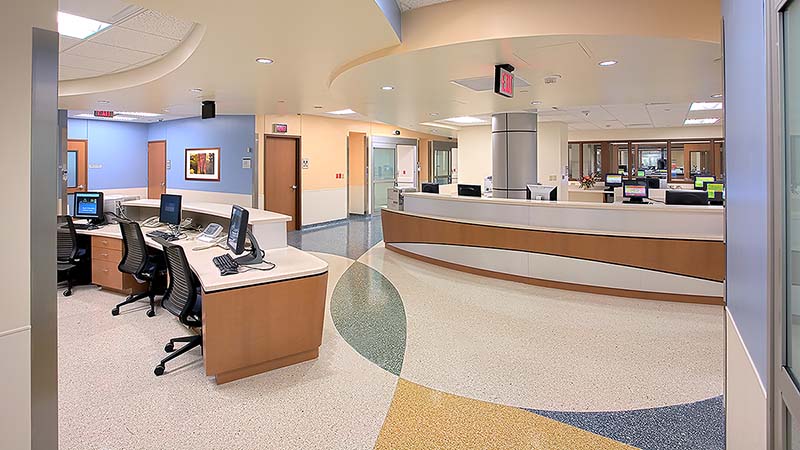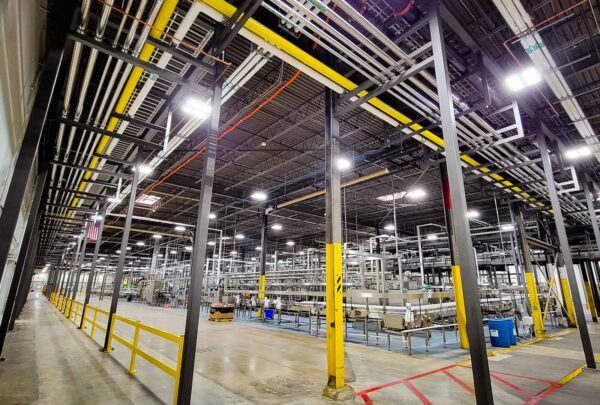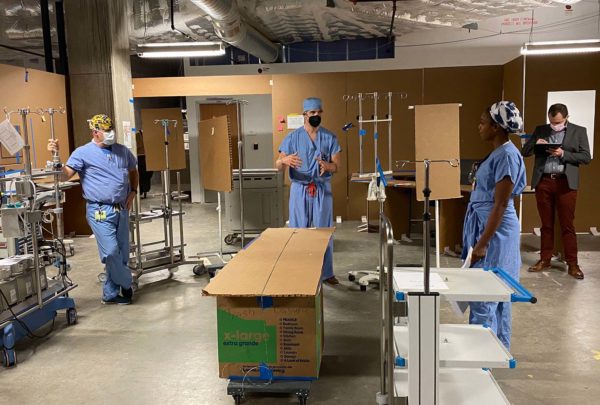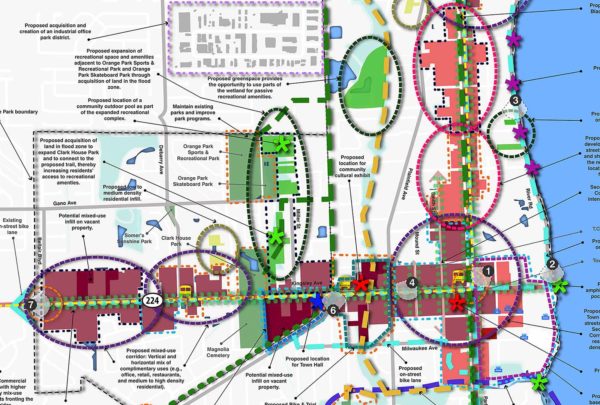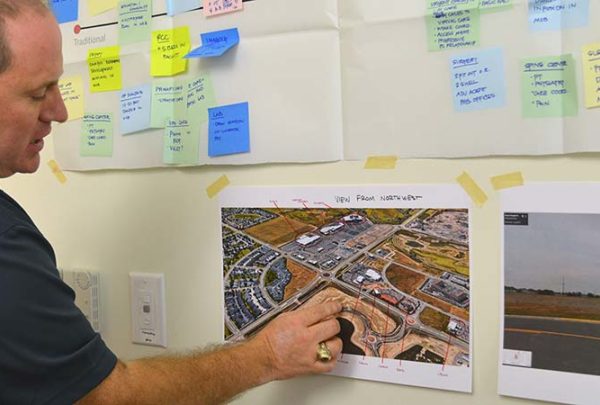As a healthcare interior designer, I am often asked why design is needed in healthcare. Once I overcome my initial shock and dismay, I respond that healthcare environments are some of the most difficult areas to design and construct because of their unique requirements and challenges. My focus as a designer is to enhance the experience, quality, and safety of healthcare environments for all users. This requires specialized experience in the healthcare market where I apply my understanding of clinical environments and functions of use with my knowledge of design principles and material types appropriate for these spaces.
Hospitals often include elements of design reminiscent of other markets. For instance, gift shops take cues from retail design, dining areas from restaurant design, administrative areas from corporate design, and patient rooms from hospitality design. What is unique to healthcare design is that designers must provide solutions that users expect from their interactions in these other markets in a way that meets the intense use of healthcare spaces.
Perhaps the most difficult area to address in healthcare design is flooring selection. Flooring not only covers the widest area of space in an interior environment, but it comes into direct contact with a wide variety of objects ranging from foot traffic, carts and equipment, and maintenance routines.
Designers are continuously presented with information regarding the performance, sustainability, and maintenance of various materials, but how should we make our decisions and ultimately pose suggestions to our clients regarding the best materials for their applications? When determining the best flooring types I routinely evaluate past performance, ease of maintenance, and any code requirements based on the clinical setting.
Past Performance
Perhaps the best indicator of how a material will perform is how it has fared in similar areas of use in the same facility. If there is no history for the use of a material within a facility, we often look to case studies. However, because visitor types, foot traffic volumes, and maintenance routines may differ, what works in one space may not work in another, so discussions should be held with the client when utilizing case studies as a basis of performance.
Ease of Maintenance
Advancements in flooring materials coupled with the demand for sustainability have led to an increase in finishes that are marketed as “low-maintenance.” While flooring materials have certainly improved over the past 15 years, no flooring is truly “no maintenance.” When selecting flooring for healthcare spaces, it is best to consider the suggested maintenance of a product and how that affects the function of the space. For instance, if a flooring material meets the budgeted price and aligns with the intended aesthetic of the space but would require consistent maintenance in a highly trafficked area, then it would not be an appropriate solution.
Code Requirements
Another factor affecting flooring selections in healthcare environments is adherence to any necessary codes and guidelines such as those provided by the Facility Guidelines Institute. For the safety of both patients and staff, maintaining appropriate slip resistances, fire ratings, dimensional stability, and rolling load weights are important characteristics to consider. Understanding which codes must be followed in each jurisdiction will provide a baseline for the selection of materials, but abiding by the guidelines set forth by the FGI is an industry best practice.
Functionality While Maintaining Aesthetics
In addition to performance, maintenance, and code requirements, factors affecting material selection can include cost, life expectancy, sustainability, acoustics, and infection control. Prior to making finish selections, it is important to prioritize these factors by what is most important to the client and the intended use of the space. For instance, if life expectancy, ease of maintenance, and aesthetics are top priorities in a lobby space, terrazzo flooring is a great option, so long as the budget allows for the higher price point. If the budget doesn’t allow for terrazzo, porcelain tile is often proposed as a substitute with the understanding that while it lowers the price point, porcelain tile requires more maintenance than terrazzo.
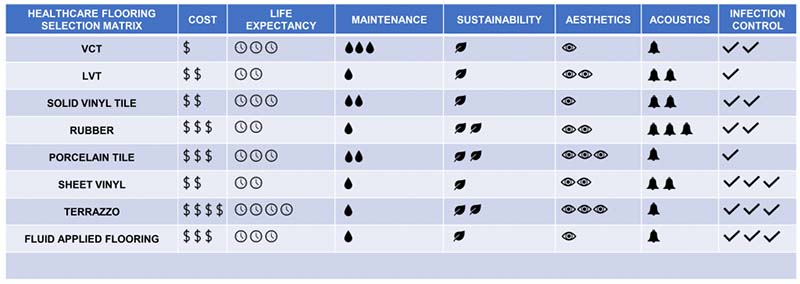
Accounting for these factors, it is important to have discussions with the decision makers on the client side to finalize flooring material selections. Input is necessary from not only client leadership but also clinical staff, environmental services, and facility management. Creating a steering committee composed of representatives from each of these departments provides varied insight into the expectations of a material as well as its intended function. Through discussions with the steering committee, analysis of product data and testing, and a designer’s experience in the healthcare market, material options can be presented that are functionally appropriate while maintaining the aesthetic vision of space.
